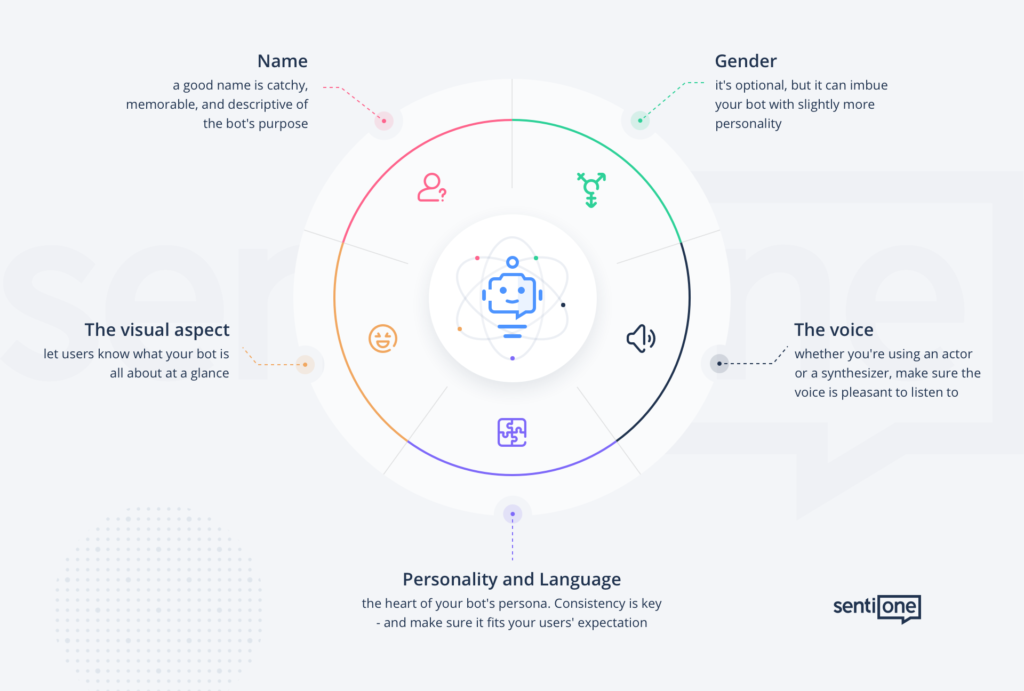How to implement your voice chat bot – top features & best practices
According to Salesforce, 78% of consumers will keep buying from a company that provides excellent customer service, even if they make a mistake. This is important, as clients tend to be unforgiving. One of the best ways to improve customer service is by implementing a voice chat bot that will relieve your Customer Support team from mundane tasks, letting them focus on more pressing issues.
In the following article, we’re going to talk about the most vital features that a voicebot solution should have in order to provide the most value. We will also discuss the best practices to keep in mind while implementing a voice chat bot.
Six key features for your voice chat bot
Before we get down to business, it’s worth knowing that not all voicebot solutions are created equal. The bots we’re currently seeing on the market can be categorized into two types: rule-based and AI-based.
Rule-based bots are very basic, in that they can do only what a human programs them to do. Since they lack self-learning abilities, they fail to recognize synonyms and can’t go off-track.
Meanwhile, AI-based solutions such as SentiOne are significantly more advanced and can closely simulate human-to-human communication. How closely? They are capable of understanding the caller’s intent almost as well as human support agents (at 96% accuracy rate).
Needless to say, you want an AI-based voicebot! Therefore, the solution you choose should have the following features:
#1 NLP and Machine Learning
In order for your voice bots to have smooth conversations with your clients, they need to have a rich vocabulary. Here’s where Machine Learning (ML) and Natural Language Processing (NLP) come into play.
How do they work? By giving your voice chat bot a “starter pack” dictionary with a couple of synonyms for each word. The bot then scours the web and your internal resources and tries to pick up as many related words as possible. As a result, they’re able to expand their vocabulary without your engagement, which also means customers will be able to try more voice actions.
SentiOne’s voice bot, for instance, can learn up to 30 synonyms by itself, once given four initial terms!
#2 Intent & sentiment analysis
Your solution should also be capable of recognizing multiple ways of asking the same question.
A truly powerful voice bot will understand that a caller asking “can I still redeem my coupon?” and one who inquires “when is my coupon’s expiration date?” are both asking about the same thing. The solution should also recognize informational gaps in the caller’s expression, and ask additional questions to make sure they understood the intent well.
Secondly, your bot should understand sentiment. If it detects a customer is frustrated, it should react accordingly. This also closely relates to the next point below.
#3 Language detection
Assuming that you’re using an AI bot with an impressive vocabulary and great intent recognition skills, it makes perfect sense for it to also adjust its communication style to the caller.
With the right solution, your bot will quickly detect whether they’re speaking to someone who prefers colloquialisms or a formal tone of voice. As a result, the caller will feel more alignment with your brand. A simple, yet smart way to offer a great customer experience!
#4 Personalization
According to research by SmarterHQ, 72% of consumers say that only messaging tailored to their needs appeals to them. This shows the importance of personalization. If your voice chat bot can access and use customer data they have in the system such as:
- Purchase history
- Most shopped categories
- Past customer feedback
it will be able to better personalize their client communication. For instance, let’s imagine a situation where a customer calls you to report an issue with their last purchase. If your voicebot can access that data, it will easily refer to the purchase history instead of asking the client to fill them in.
#5 Being able to stop and listen
While intent analysis and NLP are both important features, so is your voice chat bot’s ability to listen. Otherwise it won’t be able to figure out the next steps, or pause when the caller is talking.
A well designed voice chat bot will be programmed to not pause during the time it provides critical information, even when the caller interrupts. If it did, and the pause would be prolonged, it might cause confusion or frustration, and the customer could hang up.
#6 Smart call steering
While highly advanced voicebots can quickly pick up new vocabulary, no solution is perfect. There will be situations where your voice chat bot is unable to come up with an answer – that’s to be expected. It’s not a big deal as long as it can quickly and effectively transfer the call to the right Customer Support representative.
The most important best practices for implementing a voice chat bot
Now that you know what features your go-to solution should offer, it’s time to look at a few best practices.
#1 Make sure your voice bot is as powerful as your chatbot
Your voicebot should serve as an alternative method of contact; by no means should it be less capable of solving customer queries than your text-based chatbot! Choose a solution where the voicebot leverages the same database as your chatbot, for instance, SentiOne.
#2 Decide if your voice bot should have a persona
As humans, we’re prone to anthropomorphization, which is a fancy word for finding human characteristics in objects. Therefore, if you use an advanced bot that can adjust its tone or even has a sense of humor, it might make sense to give them a name. Not only will it improve the overall customer experience, but you might also use this for PR, i.e., to create a tech-savvy image for your brand.

#3 Ensure that the voice bot remembers the main topic of the call
Don’t you get annoyed when someone keeps asking the same question over and over again? We expect our conversational partners to listen and remember what we say. This also applies to voice chat bots – they should be able to recall the starting point of the call and ask the caller if they want to return to it in case they go off track.
#4 Knowing when to transfer to a live agent
Voice chat bots are a fantastic solution to improving your customer experience. However, it’s important to realize that they have limitations and that they shouldn’t block people from speaking to live agents.
As such, it’s not recommended to use a voice bot to deal with a customer who is experiencing serious issues with your product or service. While bots can identify the callers’ intent, they can’t yet understand emotions. And as you can imagine, a stressed customer would prefer to talk to a human being, who will be able to show them empathy, instead of talking to a “smart robot”.
Summary
If you’re on the lookout for a voice chat bot for your business, then we strongly recommend choosing an AI-based solution. Not only will it be able to understand your callers’ intent, answer FAQs, and relieve your team of call steering, it will also have self-learning abilities which means that the more conversations it engages in with clients, the better it will become at its job.
We’ll be more than happy to show you how AI voicebots work in real life – be sure to book a free demo!



